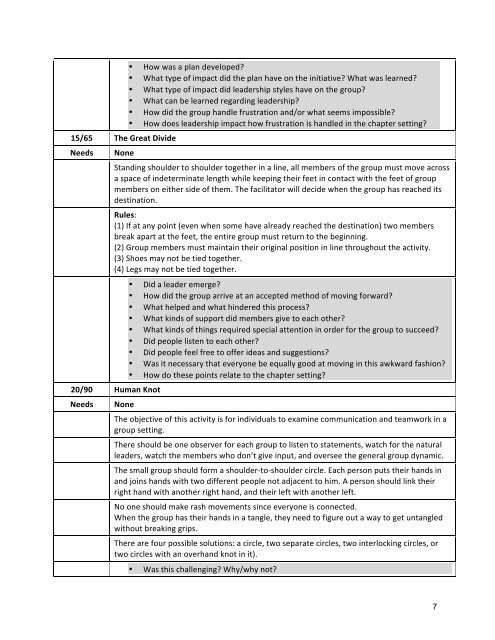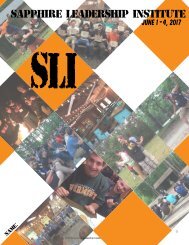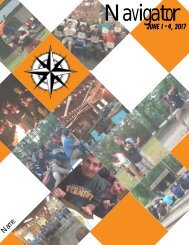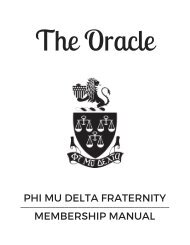Facilitator Guide 2017 FINAL
You also want an ePaper? Increase the reach of your titles
YUMPU automatically turns print PDFs into web optimized ePapers that Google loves.
15/65 The Great Divide<br />
Needs<br />
None<br />
• How was a plan developed?<br />
• What type of impact did the plan have on the initiative? What was learned?<br />
• What type of impact did leadership styles have on the group?<br />
• What can be learned regarding leadership?<br />
• How did the group handle frustration and/or what seems impossible?<br />
• How does leadership impact how frustration is handled in the chapter setting?<br />
Standing shoulder to shoulder together in a line, all members of the group must move across<br />
a space of indeterminate length while keeping their feet in contact with the feet of group<br />
members on either side of them. The facilitator will decide when the group has reached its<br />
destination.<br />
Rules:<br />
(1) If at any point (even when some have already reached the destination) two members<br />
break apart at the feet, the entire group must return to the beginning.<br />
(2) Group members must maintain their original position in line throughout the activity.<br />
(3) Shoes may not be tied together.<br />
(4) Legs may not be tied together.<br />
20/90 Human Knot<br />
Needs<br />
None<br />
• Did a leader emerge?<br />
• How did the group arrive at an accepted method of moving forward?<br />
• What helped and what hindered this process?<br />
• What kinds of support did members give to each other?<br />
• What kinds of things required special attention in order for the group to succeed?<br />
• Did people listen to each other?<br />
• Did people feel free to offer ideas and suggestions?<br />
• Was it necessary that everyone be equally good at moving in this awkward fashion?<br />
• How do these points relate to the chapter setting?<br />
The objective of this activity is for individuals to examine communication and teamwork in a<br />
group setting.<br />
There should be one observer for each group to listen to statements, watch for the natural<br />
leaders, watch the members who don’t give input, and oversee the general group dynamic.<br />
The small group should form a shoulder-to-shoulder circle. Each person puts their hands in<br />
and joins hands with two different people not adjacent to him. A person should link their<br />
right hand with another right hand, and their left with another left.<br />
No one should make rash movements since everyone is connected.<br />
When the group has their hands in a tangle, they need to figure out a way to get untangled<br />
without breaking grips.<br />
There are four possible solutions: a circle, two separate circles, two interlocking circles, or<br />
two circles with an overhand knot in it).<br />
• Was this challenging? Why/why not?<br />
7











